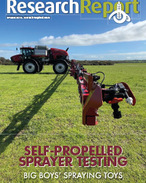1.6.1 Revenue
The direct revenue from ERF participation depends on the number of ACCUs the project generates and the price of those ACCUs when they are sold or exchanged. Indirect revenue can be generated through co-benefits.
The number of ACCUs in turn depends on the method used, along with the particulars of the farm—its location, soils, rainfall and other specific factors. Understanding the revenue component of the ERF project therefore requires an understanding of:
-
the broader (including international) policy environment that defines activity in carbon markets
-
carbon markets and particularly prices for ACCUs in those markets
-
the other regulations that define the nature and extent of the activity
-
the methods that define the nature of the activity
-
types of carbon farming
-
under the ERF, the auctions and regulations that will determine government purchases
-
a range of farm and project specifics.
1.6.2 Co-benefits
In addition to generating revenue in carbon markets, a carbon farming project may also generate a range of co-benefits for the farm. Those benefits will clearly depend on the nature of the farming enterprise and on the type of carbon farming. They include:
-
providing a noise buffer for the farm
-
improving soil quality
-
improving biodiversity, for example by providing habitat for birds and other wildlife
-
providing protection for stock (through trees providing shade and windbreaks)
-
enhancing water quality in catchments
-
improving livestock production efficiency
-
alleviating dryland salinity through watertable effects
-
improving fertiliser use efficiency
-
improving the amenity and aesthetics of the local environment.
Co-benefits may be private (accruing within the farm enterprise) or public (accruing to the wider environment outside the farm boundary). A key challenge in understanding co-benefits is in obtaining estimates to convert them to imputed dollar values so that they can be included in the economic decision.
In some cases, there may be broader government programs that allow payment for some cobenefits. It is important to note, however, that under the ERF a project will not be allowed if it would otherwise have occurred because of another government program. Also note that the sale of ACCUs to another entity means the sequestered carbon represented by those credits sold cannot also count towards carbon neutral status of the business generating the ACCUs.
The value of some co-benefits might never appear explicitly in farm accounts, as they are benefits that are not necessarily valued in markets. Nevertheless, it is important to impute a value for those benefits in order to understand the full economics of the business case.
Understanding the co-benefit component of a carbon farming project requires an understanding of:
-
the types of carbon farming
-
the specific method adopted
-
the specifics of the farm and its location.
1.6.3 Costs
A carbon farming project will inevitably involve costs, which can be divided into a number of categories:
-
At the highest level, costs include initial set-up costs, such as the costs of planning and establishing the project (including the compliance costs of satisfying regulatory requirements), as well as ongoing (annual) costs.
-
Ongoing costs include owngoing compliance costs as well as ongoing project-related costs.
Both set-up and ongoing costs can be fixed (that is, the same regardless of the size of the project) or variable (varying according to the size of the project). As is demonstrated later in this manual, the distinction between fixed and variable costs is important in determining the best size for an ERF project.
A crucial element of costs that you should also consider is the cost of your own time in running the project. Even if you work with other parties or with an aggregator, there will be time costs involved in any ERF project.
To understand the costs of participation in the ERF, farmers or landowners need to gain knowledge of:
-
the type of carbon farming being undertaken (for example, emissions avoidance versus sequestration, as well as the particular type of sequestration)
-
the regulations and requirements of the particular methodologies or methods being used for the project
-
contractual relationships that can be used to shift and manage costs.
1.6.4 Opportunity cost of the land
In some cases, an ERF project would use land that has valuable alternative uses. The potential value of those uses must be taken away from the net returns of the project to get a true sense of how valuable the project is to the whole farm enterprise.
For example, land devoted to plantations usually cannot be used for alternative enterprises. In considering a forestry sequestration project, you might consider a project on land that has low productivity under other uses so as to minimise the opportunity cost.
Carbon farming may have other opportunity costs for the farm. For example, the costs of a sequestration project that must be maintained over the long term will involve ongoing opportunity costs that extend beyond the crediting period for the project.
There may also be a relationship between participating in the ERF and returns from other agricultural activities. For example, some consumers (particularly in export markets) have expectations about the sustainability of products they purchase. To the extent that this remains a concern, being involved in an ERF project may lead to better returns in some markets.
To understand opportunity costs, farmers or landowners need to gain knowledge of:
-
farm specifics
-
regulations
-
carbon markets.
1.6.5 Taxation
Carbon farming projects are generally subject to income tax and goods and services tax. The tax implications of the ERF are detailed in Appendix B and summarised in Chapter 9, which have been prepared by independent taxation experts.
The calculations presented in this manual are made on a pre-tax basis. Because taxation depends on the specifics of farm enterprises, no adjustments for tax have been made. To assess taxation implications for your particular circumstances, read Appendix B carefully and seek specialist advice.
Explore the full Workshop Manual: The business case for carbon farming: improving your farm’s sustainability (January 2021)
Read the report
RESEARCH REPORTS
1. Introduction: background to the business case
This chapter lays out the basic background and groundwork of the manual
RESEARCH REPORTS
1.2 Being clear about the reasons for participating
Introduction: background to the business case
RESEARCH REPORTS
1.4 Working through the business case for carbon farming
Introduction: background to the business case
RESEARCH REPORTS
1.5 Factors determining project economics
Introduction: background to the business case
RESEARCH REPORTS
1.8 Important features of the business case
Introduction: background to the business case
RESEARCH REPORTS
2. How carbon is farmed under the ERF
This chapter considers in detail the activities that constitute carbon farming
RESEARCH REPORTS
2.5 Carbon farming under the Emissions Reduction Fund
How carbon is farmed under the ERF
RESEARCH REPORTS
3. The policy context and the price of ACCUs
This chapter takes a broad look at the policy context for carbon farming























